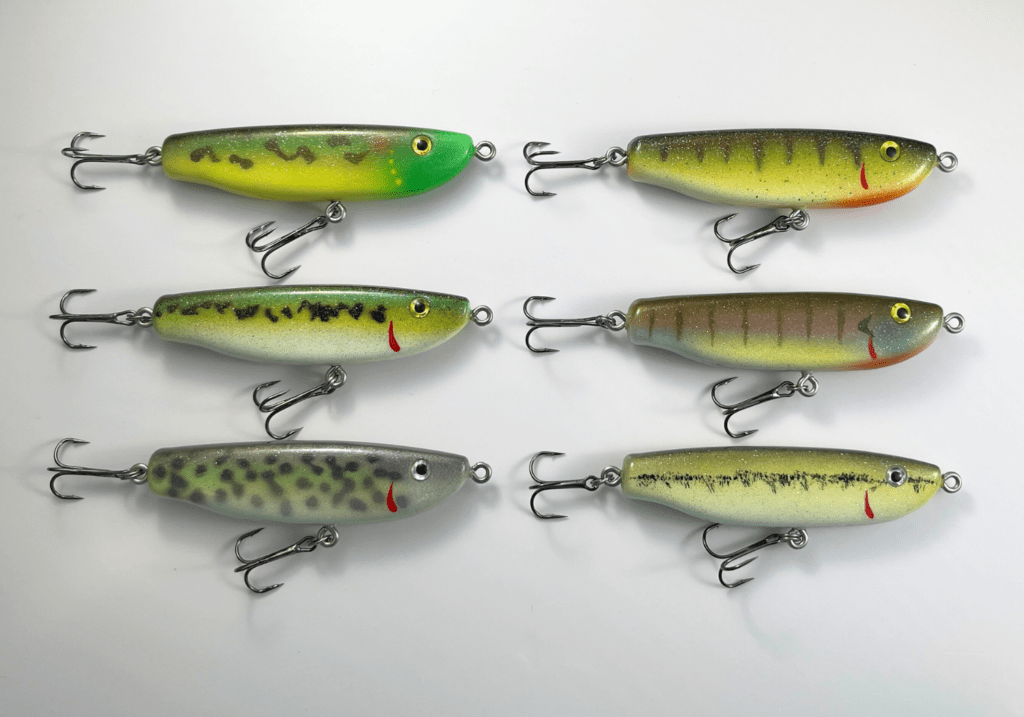Frequently Asked Questions
Equipment Log
The equipment I use most to fish these lures is a high-speed bait caster spooled with 14# test monofilament on a medium-action 6’6” bait casting rod. These lures work best with monofilament line because it floats, and 20# test is the heaviest line that will work. Braided line will give you trouble if you don’t have a monofilament leader.
I don’t like to use them on fishing line smaller than 12# test because of the weight of the lure. It also isn’t necessary for lure action and it gives you leverage if you hook something bigger than expected. With 14# test, you can also usually straighten the light wire treble hooks if you get hung up and still have plenty of distance casting. A 150’+ cast is common and achievable so spool up.
Lure Presentation Tips
This bait can be fished at different speeds and cadences from jumping it out of the water to counting it down. I like to start with a medium-paced retrieve, similar to how a baitfish that isn’t doing well acts. Their swim bladder doesn’t work as it should and they slowly sink, then fighting this they usually dart erratically towards the surface. There are variables for why you should change your presentation such as fish species, water temperature, depth, or clarity and the list goes on. Overall, you want to adjust your lure presentation to the conditions and how the fish respond.
Trying to find fish can change the speed of your presentation too, fishing fast until you find them, then slowing down once you have. If you haven’t got a lot of water to cover it’s usually best to make every cast count. Shorten your casts and make the presentation subtle for a while, then more aggressive as you go on. This gives you a chance to catch fish that are feeding and those that are just reacting.
Saltwater Fishing Tips
There are few things more satisfying to an inshore angler than a surface-crashing trout bite! Marshall’s Minnows are a great lure choice for this presentation and can catch many other inshore species as well.
There are a couple of changes I make for the gear I use in the saltwater. First, I trade out my bait casting equipment for spinning gear because I haven’t had much luck with bait casters holding up to the corrosion of saltwater. Either way, you should clean your gear after each outing.
I prefer a 6’6” or 7’ medium rod and reel that holds plenty of line. To pack more line on the reel I use 6/20# braid and the braided line also gives you a lot of leverage when you hook up. Remember there are some big fish out there so don’t go out unprepared to be spooled. But you don’t want to tie braid directly to many lures and definitely not to these. Just a short piece of monofilament or fluorocarbon will keep the bait working as it should (I use 18” of 30# fluorocarbon.)
This pound test seems to hold up to bluefish along with other toothy critters just fine. Otherwise known as chompers, bluefish will bite at anything at times including your tackle. They will eat a swivel, leaving you with a cut line. That is why it is very important not to give them a target other than your lure. This can be achieved by eliminating terminal tackle (a swivel) and joining the lines directly to one another. I like to use an Albright knot to join the two lines together. Here is a picture of the setup.
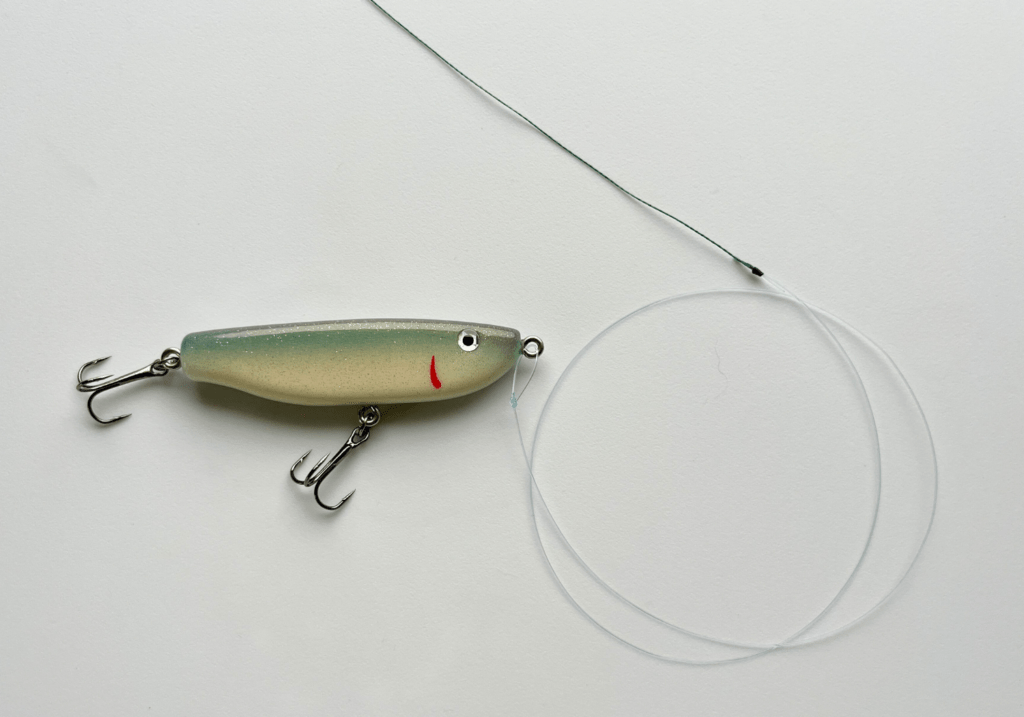
General Tips
- A Loop knot or Rapala knot gives the bait its best action. A split ring can be added to the nose to give a free action if you would rather. I don’t use leaders either unless it is necessary (for toothy critters) but it can be used on a steel leader, or a chunk of 30# monofilament leader works well too.
- I fish these baits just the way they are most of the time but occasionally change the #6 treble hooks for larger #4 or #5 hooks to give the bait more weight. This allows the bait to be fished deeper and faster. The size of line used also changes the sink rate. There are other options also to change the sink rate, such as carefully changing the eyelet size, drilling, or changing the terminal tackle size. If you do this, be sure to use glue to put eyelets back in the lure.
- I will often bend back the barbs on my hooks too if I’m not keeping anything or just catching a lot of fish to save time unhooking. Fish rarely get off because of it, also it’s not easier on them and you if you get hooked. Don’t get hooked, it makes you feel seasick pretty quick.
Basic Lure Color Tips
There are a lot of reasons why certain colors or color patterns work the best in a particular fishing situation. Some of these reasons are:
- water clarity
- light conditions
- matching the food source
- personal preference or confidence in a color
- a fish species preference color
- colors known to work well on a body of water
Sometimes fish react to a color seasonally. For instance bass and other species are known to react to the color red in the cold waters during the beginning of the year.
Occasionally all you know about why a color works should be thrown out and just use what’s working.
I like to break colors down into a few categories:
- clear water colors
- stained water colors
- muddy water colors
- nighttime colors
- matching a food source
Clear water colors are the most transparent, stained water colors are a little brighter, muddy water colors are the brightest. Solid colors and dark colors work in muddy water and at night too.
The color you choose is down on the list of reasons why you catch fish but still important. I like to start off with the colors ghost and black shad tied up if I’m not sure of what color to use. The color ghost works in many conditions including low light and the black shad resembles many baitfish.
Several colors or color patterns can work at the same time but sometimes one definitely is the best.
A walleye can be a fish that is very color-selective but can be caught on several patterns until you figure out which works the best. Still approach them or any other fish by looking at water clarity, conditions, and the body of water you’re fishing.
Here is a basic guideline of different color selections for different situations.
Clear Water Colors
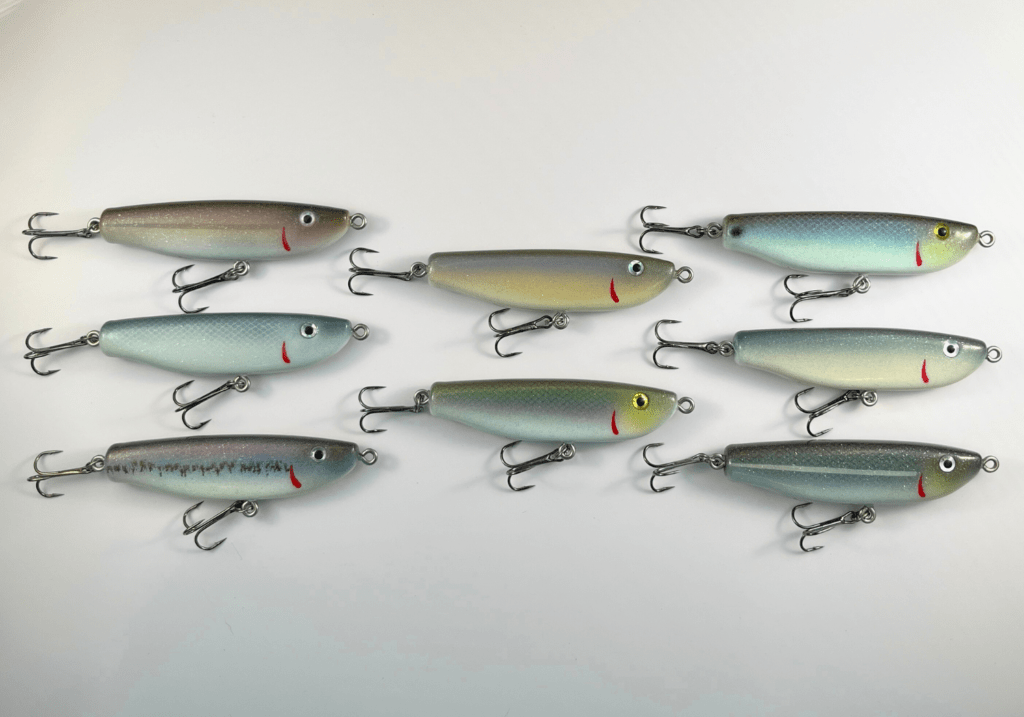
Stained Water Colors
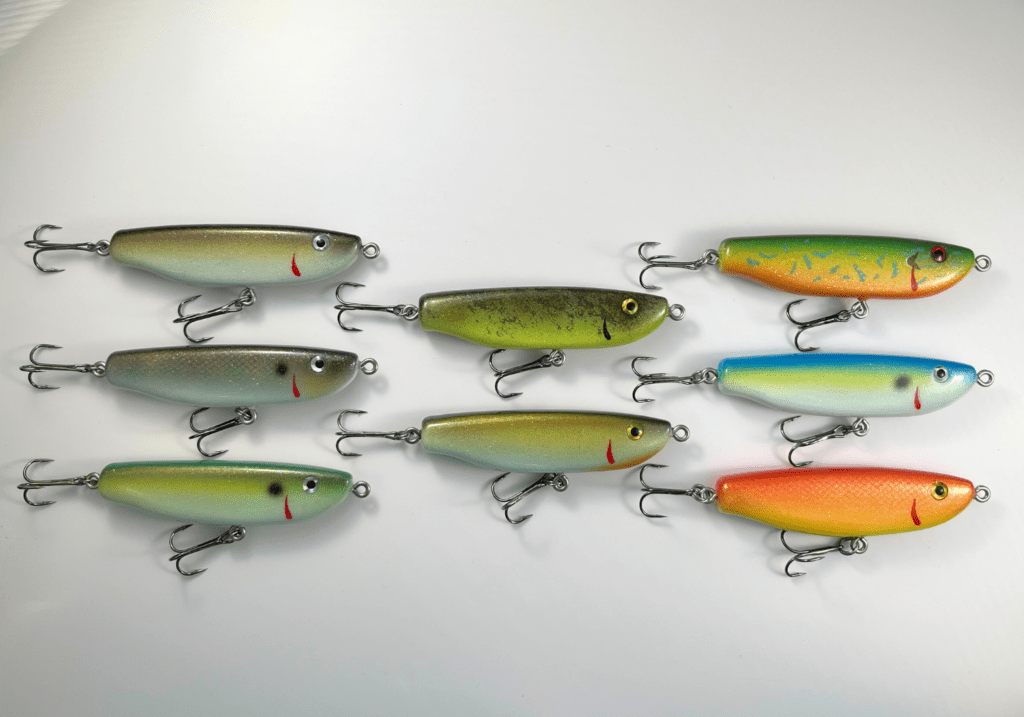
Muddy Water Colors

Night Time and Low Light Colors
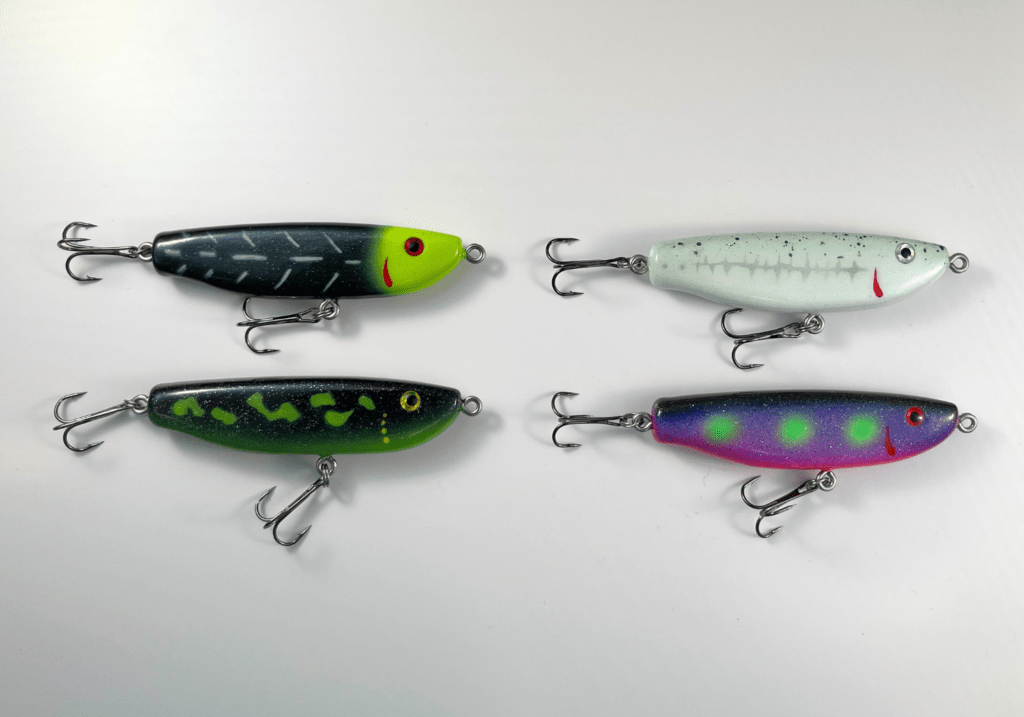
Matching a Food Source Colors
